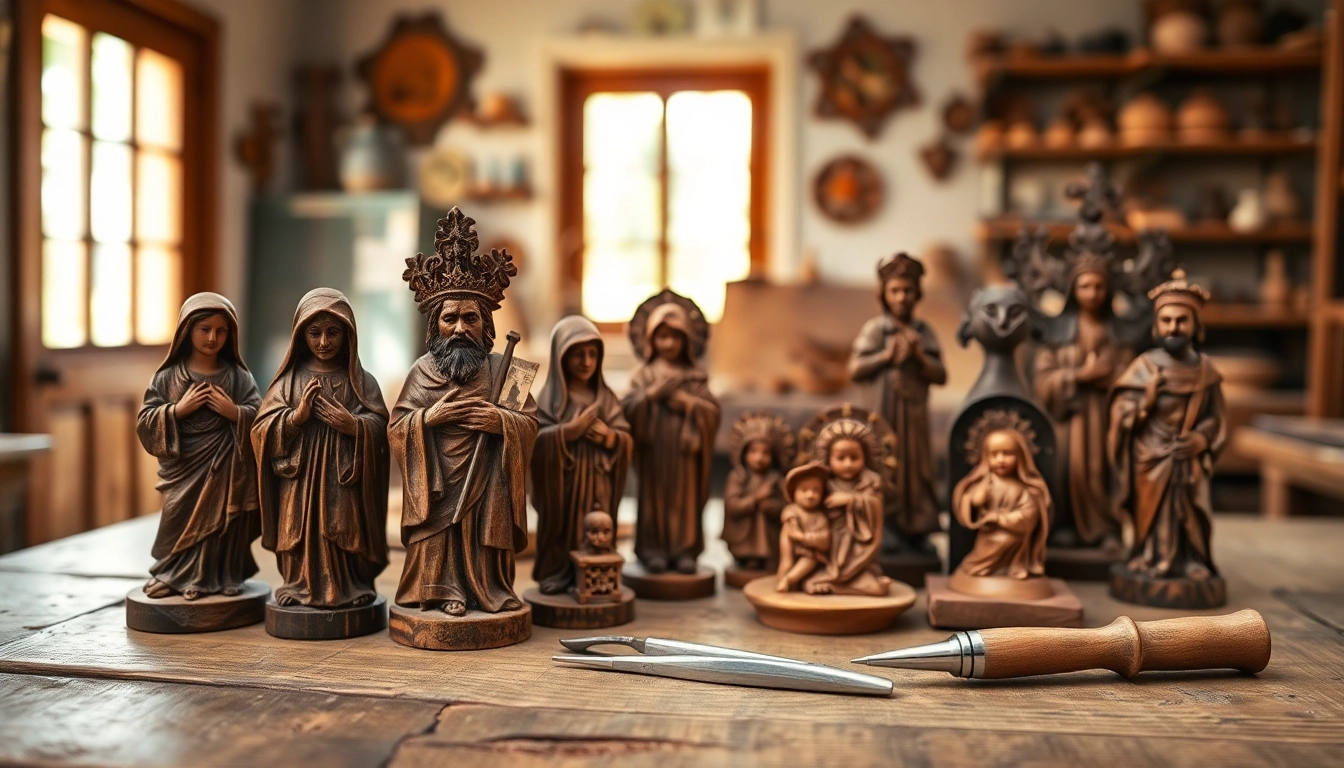Understanding Olive Wood Carvings
Olive wood carvings hold a significant cultural and spiritual resonance, particularly in regions where olive trees have flourished for centuries. The art of carving this unique wood has been passed down through generations, making it a beloved craft that not only showcases traditional methods but also carries deep-rooted heritage. Today, these olive wood carvings continue to attract admiration from collectors, decorators, and spiritually inclined individuals alike.
The Origin and Significance of Olive Wood
Olive trees (Olea europaea) are more than just sources of edible olives; they are symbols of peace, prosperity, and longevity. Native to the Mediterranean region, olive trees can live for hundreds of years and are often referenced in religious texts and ancient traditions. The wood sourced from these trees is prized not only for its distinctive grain and color but also for its historical significance. Each carving embodies a piece of the land’s cultural and spiritual narratives, acting as a tangible connection to the traditions and histories of the artisans.
Traditional Techniques of Wood Carving
The craftsmanship of olive wood carving involves a meticulous process refined over centuries. Artisans typically use hand tools, with techniques passed down through family lines, prioritizing skill and creativity over mechanization. This traditional approach allows for the creation of intricate designs, demonstrating not only the beauty of the wood but also the talent of the craftspeople. The process begins with selecting premium pieces of olive wood, which is then shaped and detailed using hand chisels and knives. As each artisan has their unique style, variations abound, making every piece a one-of-a-kind creation.
Significance in Religious and Cultural Contexts
Within many Christian communities, olive wood carvings are expressions of faith and spirituality. Often used in religious ceremonies or as symbolic gifts, these works carry deeper meanings that resonate with the narratives of the region. Nativity scenes, crosses, and figures depicting saints or significant biblical events are especially popular. Their significance stretches beyond mere decoration; they serve as artifacts of devotion and solidarity with the land that nurtured them.
Types of Olive Wood Carvings
Statues and Figures
Statues and figures made from olive wood are among the most cherished items crafted by local artisans. These sculptures range from biblical figures to abstract representations, expertly crafted to inspire awe and reflection. Each piece often reveals intricate details that tell a story—the folds of clothing on a saint, the gentle expressions on a nativity figure, and the natural grain of the wood come together to create not just art but a narrative.
Nativities and Ornaments
Nativities and ornaments carved from olive wood hold special importance, particularly during festive seasons. Olive wood nativity sets are treasured gifts, symbolizing the birth of Christ and often used to decorate homes during Christmas. They offer a connection to the birthplace of these traditions, making them spiritually meaningful. Beyond nativities, decorative ornaments—such as crosses or angel figures—serve as year-round reminders of faith.
Functional Items versus Decorative Pieces
While many associate olive wood carvings with décor, artisans also create functional items. These can include bowls, utensils, and cutting boards that marry practicality with artistry. Such pieces maintain the elegance and beauty characteristic of olive wood while serving everyday purposes. This dual functionality blurs the line between art and object, highlighting the versatility of olive wood carvings.
Choosing Quality Olive Wood Carvings
Authenticity: Handcrafted vs. Mass-produced
As with any artisanal product, authenticity matters when choosing olive wood carvings. Handcrafted pieces are unique, each reflecting the artisan’s individual style and effort, whereas mass-produced items often lack the same character. When shopping for olive wood carvings, look for indicators of handwork such as slight variations in form, detailed craftsmanship, and the use of natural wood textures. Seeking fair-trade sources that emphasize artisan integrity ensures you are supporting the authentic craft.
Recognizing Quality Craftsmanship
Recognizing quality craftsmanship goes hand-in-hand with understanding the materials used. High-quality olive wood carvings exhibit smooth finishes with attention to detail. Inspect the intricacy of the design, the transitions between different elements, and the overall balance of the piece. Additionally, authentic olive wood will have a distinctive golden-brown hue marked with darker veins, showcasing its beauty and individuality.
Care and Maintenance Tips
Proper care and maintenance can ensure that olive wood carvings last for generations. These pieces should be cleaned gently with a soft cloth, avoiding harsh chemicals that could strip their natural oils. For functional items, it is best to hand wash with mild soap and dry them immediately to prevent warping. Occasionally, applying a small amount of mineral oil helps maintain the luster and protective qualities of the wood, enhancing its lifespan.
Buying Olive Wood Carvings
Where to Find Authentic Pieces
Finding authentic olive wood carvings requires attention to sources. Local markets in regions such as Bethlehem and Jerusalem are known for their artisanal products. Online shops specializing in fair-trade or directly supporting artisans can also be reliable. Established stores and specialty galleries often guarantee authenticity through proper documentation and relationships with artisans.
Online vs. In-person Shopping Experiences
Online shopping presents the convenience of accessing diverse collections without geographical limitations. Websites that specialize in olive wood products often provide thorough descriptions, showcasing the craftsmanship and origin of each piece. However, in-person shopping offers the tactile experience of examining the carvings and assessing their quality first-hand. For serious collectors, this could be an invaluable opportunity to engage with the artisans and learn about their techniques and stories.
Understanding Pricing and Value
Pricing for olive wood carvings can vary significantly based on factors including size, intricacy, and the craftsman’s reputation. While cheaper pieces may tempt buyers, investing in higher-priced, quality items often proves worthwhile in terms of longevity and craftsmanship. Understanding market trends and having a clear budget helps navigate the options, ensuring value is maximized with every purchase.
Connecting with the Artisan Community
Support Local Artisans and Communities
Supporting local artisans fosters community development and preserves cultural heritage. Many artisans in the olive wood carving industry rely on fair-trade practices, ensuring they receive fair compensation for their labor. By purchasing directly from these communities, customers contribute to economic stability, allowing traditions to continue flourishing.
The Impact of Cultural Heritage on Art
Olive wood carvings are deeply intertwined with cultural heritage, each piece a testament to the history of the artisans and their communities. This heritage influences technique, design, and even themes within the art. Understanding the cultural context enhances appreciation for these carvings, making them thoughtful and meaningful additions to any collection.
How to Get Involved with Artisan Projects
For those looking to connect more deeply with artisan communities, there are plenty of opportunities. Engaging in workshops, participating in artisan markets, or collaborating on projects involving local craftspeople can provide invaluable cultural insights. Additionally, supporting organizations that promote traditional crafts can help expand these practices to future generations while ensuring artisans receive recognition for their vital work.



